Blog Archives
Kokoda remembered
This year marks the 75th anniversaries of the Kokoda campaign during the Second World War.
The Kokoda Campaign, from July 1942 to early 1943, involved Australian troops in a desperate and vicious fight in the Owen Stanley Range and on the beaches of northern Papua to stop the advance of Japanese forces.
The anniversary has a special resonance for the City of Canada Bay through the Kokoda Track Memorial Walkway. This beautiful memorial takes the form of an 800 metre rainforest walk which links Concord Repatriation General Hospital, where many Second World War veterans were nursed back to health, and Rhodes Railway Station. A series of 22 stations along the walkway highlight places of significance in the New Guinea campaign and pays tribute to the tremendous sacrifice made by Australian soldiers.
The Australian War Memorial will mark the Kokoda Campaign with a special Last Post ceremony on 2 November 2017.
Backyard innovator
The Second World War was a time for individual resourcefulness.
Locally, Kenneth Beames turned his passion for astronomy and building his own telescopes to making optical equipment for the war effort. In the backyard of his home at Russell Lea he made rifle sites, periscopes, reflectors, sighting telescopes and munitions. He constructed his own grinding and testing machinery and even built his own furnace to make his own glass when supplies of lens-making glass ran out due to war restrictions.
After the war he created the largest privately owned telescope in Australia and went on to build his own observatory at Linden in the Blue Mountains which still survives as a testament to his ingenuity. It is believed that he created at least 450 telescopes during his lifetime.
The tear-sheet from Smith’s Weekly in 1941, rightly ranks him among the ‘important people’ who contributed to the war effort in Australia.
Canada Bay and the Second World War
This year marks the 75th anniversary of several significant events of the Second World War.
The impact of the Second World War on the local community in Canada Bay is, in many ways, a reflection of the experience of Australia at that time. It was an ‘all-in’ war, placing extraordinary demands on everyone. Parts of the local area became training grounds for Australian and American soldiers, while local industries were geared to war production, producing everything from ships (and the paint to paint them with) to ration packs for soldiers. It was a time of long hours and hard work. The war affected the lives of every man, woman and child in the community.
To coincide with Australian Heritage Festival, the Local Studies Librarian will be speaking on the involvement of industries and people of our area during the Second World War at the City of Canada Bay Museum, 1 Bent Street, Concord on Saturday, 6 May at 1.30pm for 2pm start.
The photograph shows the launch of a ship at Brays Bay built by Tulloch during the Second World War.
A strike for equality
During the Second World War women were called upon to fill the factory jobs left vacant by men who had enlisted in the armed forces. Their role became vital in ensuring that factories continued to operate and produce goods and materials essential for the war effort.
While women were expected to fill positions previously held by men, usually the pay was only about half the wages paid to men. In January 1942 forty women working in the shoe cutting department of Dunlop’s factory at Drummoyne went on strike for equal pay. They were amongst the pioneers of the movement for equal pay for women. The men had been paid £4 19 shillings 6 pence per week while the women were only receiving £2 14 shillings per week, with one junior female receiving just 26 shillings for her week’s work. The strike was ‘settled’ by a lift in wages, however, the women still only received 84 per cent of the male rate of pay.
In 1977 Dunlop closed its factory at Birkenhead Point and the site was redeveloped as Birkenhead Point Shopping Centre which opened for trading in 1979. Read more about the story of Dunlop at Birkenhead Point, below, under comments.
Tobruk anniversary
This year marks the 75th anniversary of the siege of Tobruk during the Second World War.
Five Dock has played a special part in the commemoration and remembrance of Tobruk. The photograph shows the unveiling of the Tobruk obelisk at the corner of Lyons Road and Great North Road by Sir Roden Cutler in 1968. It is modelled on the memorial at the Tobruk War Cemetery. Adjacent to the memorial is a row of trees planted by the Ladies of the Rats of Tobruk Association and the mast of the HMAS Vendetta which played a vital role in supply and reinforcement at Tobruk.
Each year veterans met at the memorial on ‘Tobruk Sunday’, the Sunday in April closest to the date when the siege began on 10 April 1941. Last year was the last occasion that the Tobruk veterans marched at Five Dock.
The 100 years of Anzac page includes some fascinating memories of Tobruk veterans.
The story behind the sculpture
The sculpture by Nola Farman at Brays Bay Reserve commemorates Commonwealth Ship Building Yard no. 4 which operated there during the Second World War.
As the war intensified in the Pacific there was a need for small vessels to operate in the waters to the north of Australia. The government established the Small Craft Directorate of the Department of Munitions to construct small shallow-draft ships, known as ‘lighters’. Several companies around Australia were involved in their construction. At Rhodes the Tulloch plant established shipbuilding facilities at Brays Bay. Tulloch concentrated on fabricating the bow, first mid-ship section and steel superstructure, while the stern and rear mid-ship sections were constructed by Waddingtons at Granville.
The exact number that were built and launched at Brays Bay is unclear but there were at least 13 and possibly as many as 24 vessels built according to David Jehan in his recently published book on Tulloch.
In addition to the sculpture, the site of the slipway is still visible and some of the names of the ships are recorded along it. The Australian War Memorial holds a fascinating series of drawings of the Tulloch operations at Brays Bay by R. Emerson Curtis.
Commandos
To coincide with NSW History Week, Frank Walker will be speaking at Five Dock Library about his recently published book Commandos.
Frank Walker is a veteran journalist who has previously written books on the Vietnam War and British atomic tests in Australia. His latest book Commandos is a gripping military history written from the perspective of those who lived it. The talk will be at Five Dock Library on Thursday, 3 September 2015, at 6pm for a 6.30pm start. Bookings can be made online.
NSW History Week from the 5-13 September 2015 focusses on the theme ‘War, nationalism, identity’. For more information on activities see History Council NSW.
Remembering their sacrifice
The Second World War ended 70 years ago on the 15 August 1945 when Victory in the Pacific was declared, following the unconditional surrender of Japan. Conflict had ended three months earlier in Europe on the 8 May 1945, known as VE Day (Victory in Europe).
In 1945 there was a thanksgiving service to mark Victory in the Pacific at the corner of Flavelle and Wellbank Streets, Concord near the site of present-day Concord Library. The 70th anniversary will be commemorated by a special service at the Kokoda Track Memorial Walkway on 15 August 2015 at 2pm.
The Kokoda Track Memorial Walkway is a beautiful memorial to veterans of the Second World War, in particular those who served in the South West Pacific. The 800 metre rainforest walk links Concord Repatriation General Hospital, where many veterans were nursed back to health, and Rhodes Railway Station. A series of 22 stations along the walkway highlight places of significance in the New Guinea campaign and pays tribute to the tremendous sacrifice made by Australian soldiers.
War is over!
This year marks the seventieth anniversary of the end of the Second World War.
The end of the war in Europe, known as VE Day (Victory in Europe), was on 8 May 1945 while in the Pacific, VP Day (Victory in the Pacific) was marked on the 15 August 1945, following the unconditional surrender of Japan.
Locally, there were thanksgiving services to mark VE Day and VP Day on the Flavelle Estate at the corner of Flavelle and Wellbank Streets, Concord. Although the estate was at that time still occupied by the Flavelle sisters, the land had been set aside as the location for Concord Council Chambers. Concord Library and Wellbank Children’s Centre was built on the site in 2008.
The photograph, above, was taken in New Guinea by Bob Tait, a descendant of W. S. Tait of Liryclea, Russell Lea.
We will remember them
Five Dock has long held a special place in the remembrance of Tobruk.
The obelisk at the corner of Lyons Road and Great North Road was unveiled in 1968. It is modelled on the memorial at the Tobruk War Cemetery. Adjacent to the memorial is a row of trees planted by the Ladies of the Rats of Tobruk Association and the mast of the HMAS Vendetta which played a vital role in supply and reinforcement at Tobruk.
Each year veterans have met at the memorial on ‘Tobruk Sunday’, the Sunday in April closest to the date when the siege began: 10 April 1941. This Sunday, 12 April 2015, will be the last occasion that the Tobruk veterans will meet at Five Dock.
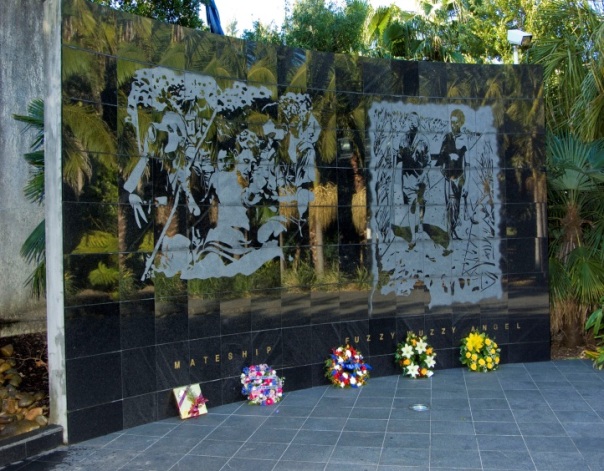


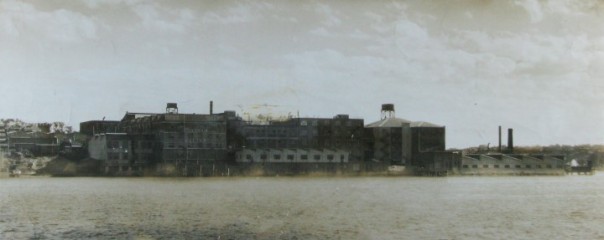
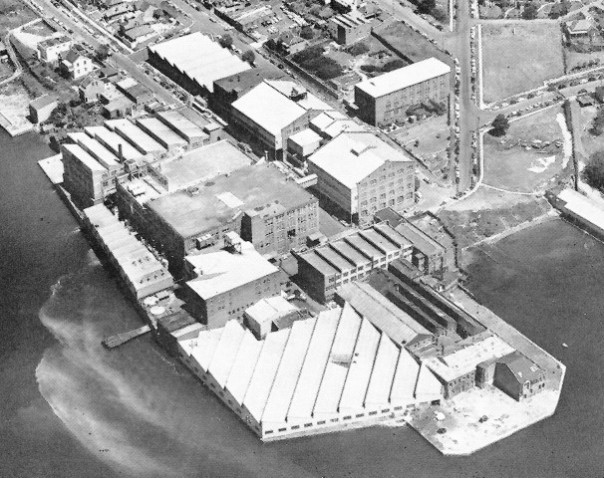
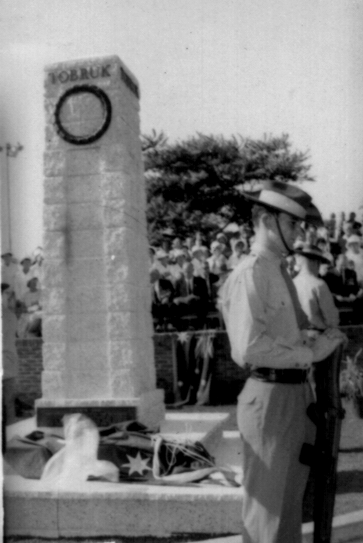
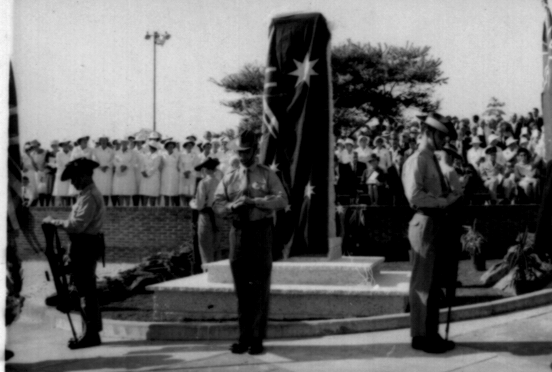
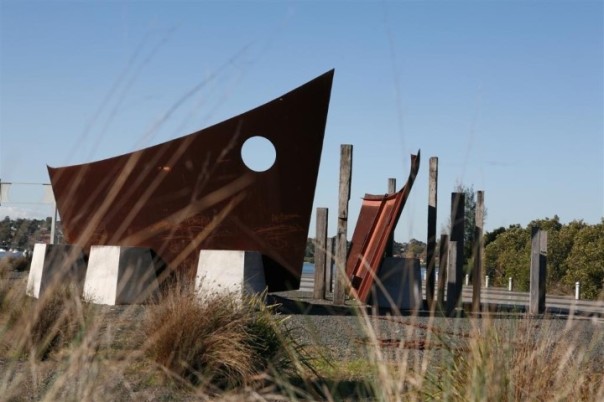
![commandos-cover[1]](https://canadabayconnections.files.wordpress.com/2015/08/commandos-cover1.jpg?w=604)


